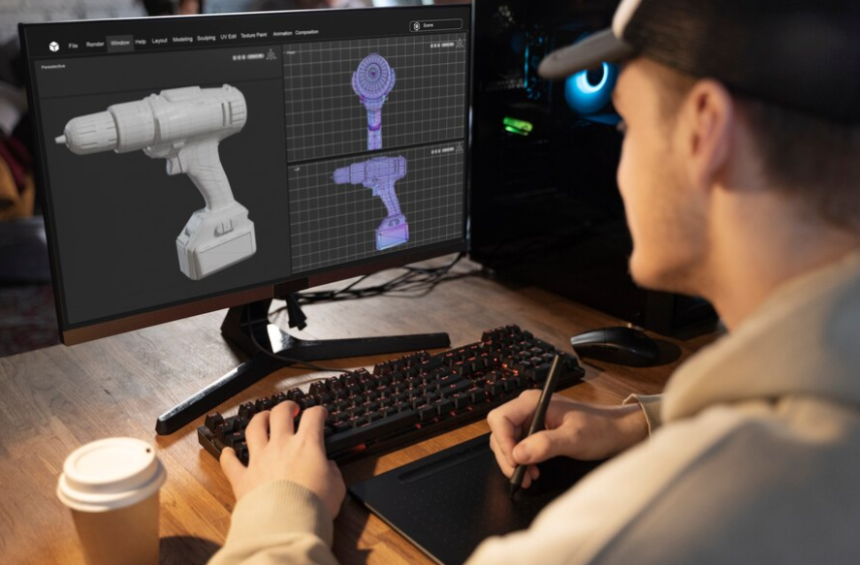How to Make 3D Animation
How to Make 3D Animation: 3D animation is an engaging art form that brings visual elements to life through three-dimensional computer graphics. This versatile technique is employed across a range of fields, from entertainment to education and more. Whether your goal is to craft animations for films, video games, or simulations, mastering how to make 3D animation can unlock a wealth of creative opportunities. This guide will take you through the complexities of how to make 3D animation with a detailed, step-by-step approach to help you master this craft.
What is 3D Animation?
3D animation involves creating moving images within a three-dimensional digital environment. Unlike 2D animation, which relies on flat images, 3D animation introduces depth, making visuals appear more realistic and immersive. The process includes modeling, texturing, lighting, rigging, animating, and rendering to produce the final animated sequence. Understanding how to make 3D animation involves mastering these elements to bring your visuals to life.
Step-by-Step Guide to Creating 3D Animation
Step 1: Conceptualization and Planning
1.1. Define Your Goals
Before diving into technical aspects, establish the goals of your project. Are you working on an animation for a short film, a video game, or a marketing campaign? Clearly define your objectives to guide your process.
1.2. Create a Storyboard
Develop a storyboard to visually outline the narrative of your animation. Sketch key scenes and movements to map the animation’s flow.
1.3. Develop a Script
Draft a detailed script that includes dialogues, actions, and scene descriptions. This script will serve as a blueprint for your animation.
Step 2: Modeling
2.1. Choose Your Software
Select 3D modeling software that meets your needs. Popular choices include Blender, Autodesk Maya, and 3ds Max. These tools are essential when learning how to make 3D animation.
2.2. Create Models
Begin by creating 3D models of characters, objects, and environments. Start with basic shapes and refine them to achieve the desired level of detail.
2.3. Apply Textures
Textures add surface details to your models. Use UV mapping to apply textures, enhancing the realism of your models.
Step 3: Rigging
3.1. Design a Skeleton
Rigging involves creating a digital skeleton for your models. Design bones and joints to facilitate realistic movement.
3.2. Skinning
Attach the model’s mesh to the skeleton. Skinning ensures that the model moves naturally with the rig.
Step 4: Animation
4.1. Set Up Keyframes
Define keyframes to mark the beginning and end points of movement. The software will interpolate between these keyframes to create smooth motion.
4.2. Animate
Adjust the position, rotation, and scale of your models over time to achieve the desired animations. Refine the movement to enhance realism.
4.3. Add Secondary Animations
Include secondary animations, such as additional motions and expressions, to make your animation more lifelike.
Step 5: Lighting and Rendering
5.1. Set Up Lighting
Lighting is crucial for the final appearance of your animation. Position lights to highlight important elements and create the desired mood.
5.2. Render
Render your animation to produce the final images or video sequence. Select rendering settings based on your project’s requirements.
5.3. Post-Processing
Edit and refine your rendered footage with video editing software. Add sound effects, music, and other effects to enhance the final product.
Step 6: Review and Export
6.1. Review Your Animation
Watch your animation multiple times to identify and fix any issues. Obtain feedback from others to ensure its effectiveness.
6.2. Export
Export your animation in the desired format and resolution, preparing it for distribution or integration into your project.
FAQs
What software is best for beginners learning how to make 3D animation?
Blender is highly recommended for beginners due to its powerful features and free availability. It provides a comprehensive suite for modeling, rigging, animation, and rendering. Autodesk Maya and 3ds Max are also popular but come with higher costs and steeper learning curves.
How long does it take to create how to make 3D animation?
The time required varies significantly based on project complexity and the animator’s skill level. Simple animations might take a few weeks, while more complex ones could take several months. Beginners should expect to spend considerable time mastering tools and techniques.
Can I create how to make 3D animation without prior experience?
Yes, you can start learning how to make 3D animation without previous experience. Many online resources, including tutorials, courses, and forums, are available to help beginners understand the basics of modeling, rigging, and animation. Patience and practice are essential for proficiency.
Conclusion
Learning how to make 3D animation is an exciting journey that merges creativity with technical skill. By following this guide, you can develop the skills needed to create dynamic and engaging animations. Each step, from conceptualization and modeling to animation and rendering, is essential in bringing your ideas to life. Embrace the learning process, experiment with different techniques, and continuously refine your skills to excel in how to make 3D animation.


